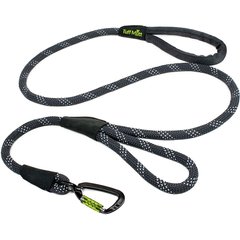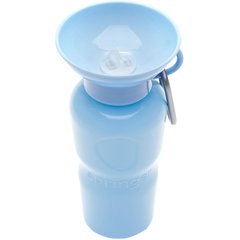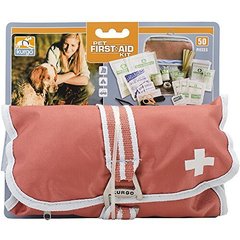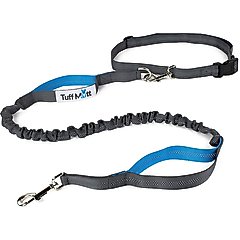Best Dog Hiking Gear: 15 Essential Supplies for Hiking With Dogs
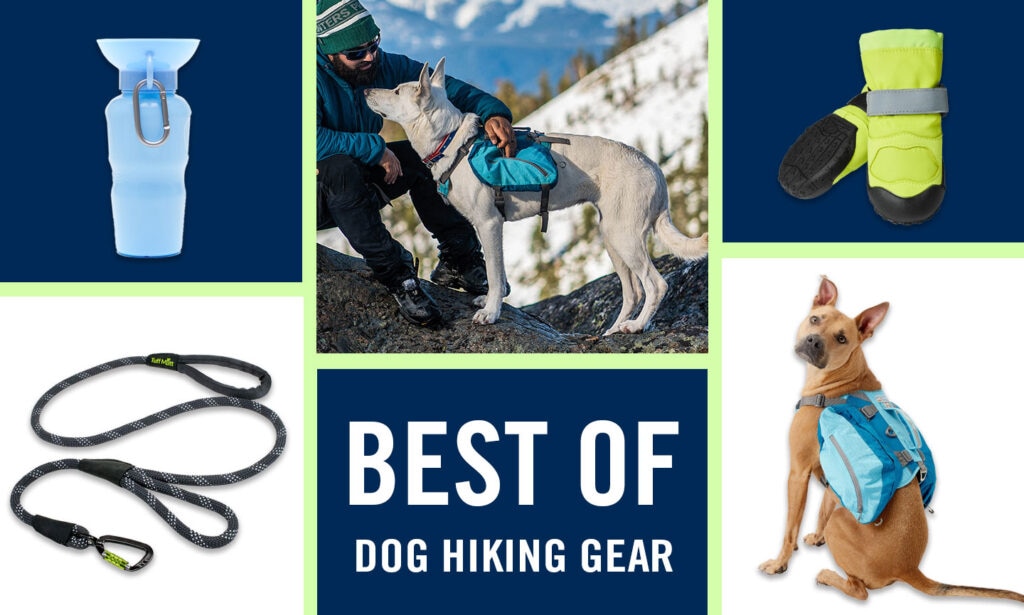
Photo by Sara Paul
Hiking with your dog is a great way to spend quality time together because it offers many benefits for you both. Not only is it a great cardiovascular and strength workout, but also a mentally enriching experience that gets both you and your pooch out of your normal routine and into the Great Outdoors and all of its beauty. Ready to hit the trail? With this comprehensive shopping guide, you’ll know exactly what to pack, and you’ll find the best dog hiking gear that other nature and dog lovers like you use.
15 Best Dog Hiking Supplies
Best Dog Hiking Harness
Chai's Choice Premium Outdoor Adventure 3M Polyester Reflective Front Clip Dog Harness, Black, Medium: 22 to 27-in chest
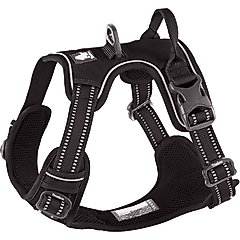
Best Dog Hiking Collar
GoTags Nylon Personalized Reflective Dog Collar, Pink, Small: 11 to 16.5-in neck, 5/8-in wide

Best Dog Hiking Backpack
Kurgo Baxter Dog Backpack, Big Baxter, Coastal Blue
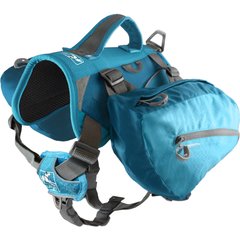
Best Dog Carrier Backpack for Hiking
K9 Sport Sack Air 2 Forward Facing Dog Carrier Backpack, Light Grey, Small
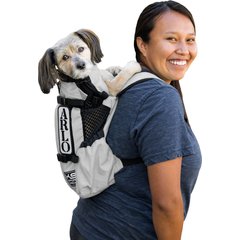
Best Collapsible Bowl
Frisco Travel Collapsible Silicone Dog & Cat Bowl, Gray, Medium: 3 cup
Best Dog Booties for Hiking
Frisco Reflective Dog Boot, Lime Green, Medium, 2 count
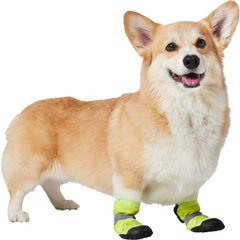
Best Dog Cooling Vest
Frisco Watercolor UPF 45 Cooling Dog Vest, Medium

Best Dog Poop Bags for Hiking
Earth Rated Dog Poop Bags, Refill Rolls, Lavender Scented, 120 count

Best Dog Treat for Hiking
Merrick Power Bites Real Texas Beef Recipe Grain-Free Soft & Chewy Dog Treats, 6-oz bag
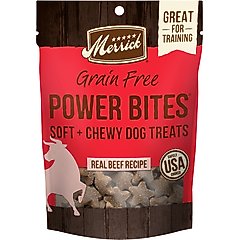
Best Dog Food Storage Container
Kurgo Kibble Carrier Travel Dog Food Container, Navy Blue
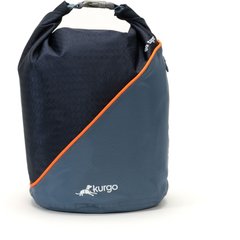
Best Dog Sunscreen
Emmy's Best Pet Products Sun Skin Protector Dog Spray, 8-fl oz bottle

How To Find the Best Dog Hiking Gear
Before you start shopping for dog hiking gear, there are a few things to consider to help you determine what you’ll need, including what’s a must versus a want. We spoke with Maria Christina Schultz, certified canine fitness trainer and owner of Maria Christina K9 Training, who regularly hikes with her Australian Shepherds, Bodie and Willow, for advice.
- The weather: Check the temp. Will it be hot? A cooling vest may be in order. And don’t just look up what the forecast is on the day you plan to hike, but also what may have occurred in the days prior. Rain can leave muddy and slick trails, as can melting snow, in which case dog boots may be needed. Seasonality comes into play too. Verify the local hunting seasons, and even if you’re hiking in a no-hunting zone, consider putting a brightly colored vest or jacket on your pup as an extra precaution, says Schultz.
- Your dog’s physical abilities: A dog’s age and breed don’t tell the full picture, says Schultz. Consider prior injuries, temperament and current fitness level to keep your dog out of harm’s way—and to make sure they actually enjoy themselves out there. What’s more, even athletic, well-conditioned dogs may have difficulty traversing trails with high elevation gains. A dog carrier backpack may help when your dog is unable to traverse the trail, or simply to give them a break from walking.
- Trail rules: Not only do you want to confirm the trail is dog-friendly, but you’ll also want to know if dogs are expected to be leashed.
- Length of hike: How long will you be out on the trail? This will help you determine what supplies you should bring, like food, water and bowls for each.
Best Dog Hiking Harness
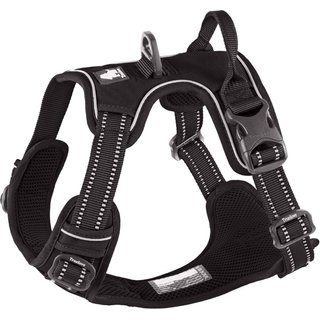
This premium dog harness is sturdy and durable, so it can take on whatever dirt and debris your next hike brings. It features two heavy-duty D-rings—one in the front next to your dog’s chest, and another at the back alongside a handle for easy grabbing if you need to help hoist your pup over a stream or steep incline. The harness is a great choice when hiking at night or during low-visibility, thanks to its reflective piping. Available in sizes XS-XL.
Best Dog Hiking Leash

This rope-style leash isn’t called Tuff Mutt for nothing. It’s thick and strong with a twist-and-lock carabiner on the end to clip onto your dog’s harness. It can withstand up to 1,000 pounds of force, so no matter how hard your dog pulls to catch that chipmunk, they won’t get loose. Customers appreciate that the leash is still comfortable to hold despite its tough construction.
Best Dog Hiking Collar

When peace of mind is what you’re after, this personalized, reflective dog collar can help. With the option to embroider up to 25 characters directly onto the collar, your dog will have the necessary contact information on them at all times. Pet parents attest to the reflective features working well in dark or dim environments, and say the collar is well-made. Available in sizes S, M and L.
Best Dog Hiking Backpack
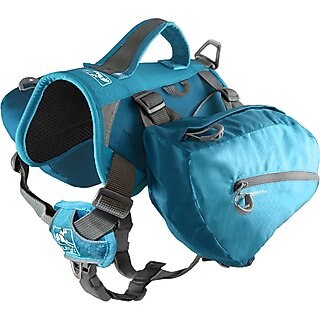
If you’re taking your outdoorsy pup hiking with you, it’s only fair that they help carry some of the essentials, right? This lightweight, ergonomically designed dog backpack features padding at the spine and two saddlebags on either side to evenly distribute the weight of your items. Just make sure your dog is large enough to carry a backpack, you don’t overload the pack and you acclimate your dog to wearing a backpack before heading out.
Best Dog Carrier Backpack for Hiking
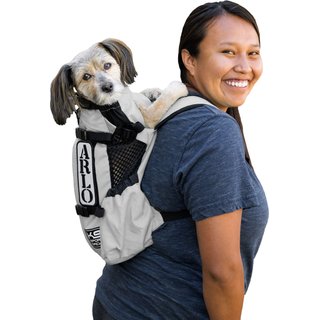
If you have a pup who would much rather take in the scenery from the comfort of your shoulders, this sport sack dog carrier is an effective option for you both. The veterinarian-approved design means you can feel confident your dog will be safe and comfortable. Plus, the sack has a built-in safety D-ring to attach your dog’s collar and ventilation on the sides. Pet parents say the backpack has opened up so many new opportunities for adventure together.
Best Collapsible Bowl
It’s easy to overlook the necessities when you’re thinking of all the potential pivots that hikes with your dog can take, but this collapsible, dual-sided dog bowl is a must. The BPA-free, silicone bowl zippers shut when not in use, which makes it a breeze to carry and just as easy to open back up when you both need a water break. Customers say it’s lightweight and easy to carry with the attached ring.
Best Dog Water Bottle
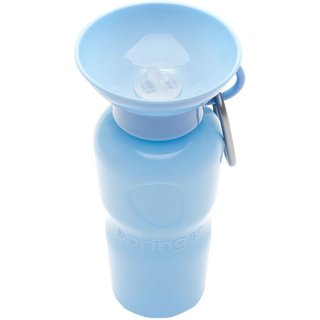
When rehydration is needed and fast, this travel water bottle gets water to your thirsty pup ASAP. Just unclip the bottle’s D-ring from your backpack or fanny, and squeeze the flexible bottle until water flows into the attached cup at the top. When you’re all done, simply stop squeezing for a leak-proof seal. Pet parents say the bottle has usefulness beyond hikes—dog parks, walks in the neighborhood and even car rides.
Best Dog Booties for Hiking

Keep your pup’s feet and paw pads protected along your hike with these adjustable booties. Dog paw pad injuries are some of the most common when hiking with your dog, so it’s best to be prepared, says Schultz. And it’s best to get your dog used to wearing them near home before heading out the door for a hike, she says. Chewy customers applaud the durability of the booties and the protection they offer their pups on various terrain during hikes, as well as on hot pavement when at home. Available in sizes XS-3XL.
Best Dog First Aid Kit for Hiking
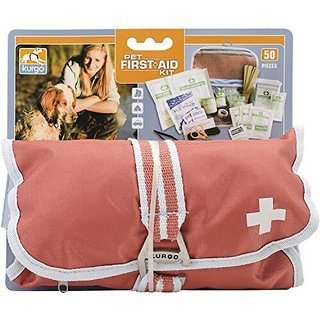
For all the fancy harnesses or backpacks you pack for your next hiking adventure with your dog, don’t forget the first aid kit. The kit includes 50 pieces of essential first aid, such as antiseptic wipes, gauze pads and even a thermal foil blanket in case your dog is ever at a hypothermia risk. Take note of everything it packs into one small, portable pouch, and supplement anything you think you may need in addition. One Chewy customer added tweezers and Benadryl®, for example, and says the kit is perfect for long hiking trips.
Best Dog Cooling Vest

What offers sun protection and keeps your dog cool for hours? This impressive cooling vest. The lightweight fabric protects against both UVA and UVB rays, and the best part is that you don’t need a refrigerator to use it—which is not exactly an option when hiking outdoors. You only need to wet the vest (bring out the water bottle) and place it on your pup to keep them nice and cool. One pet parent said it stayed cool even in temps well into the 90s. Available in sizes XS-2XL.
Best Dog Poop Bags for Hiking

You never want to leave your dog’s poop on a hiking trail—even if it’s off to the side and covered with leaves, says Schultz. This can contaminate nearby water or pass disease onto wildlife, she says. These poop bags, made from 65% certified post-consumer recycled plastic, will do the trick. Just find the nearest designated trash can to drop it in. Customers appreciate their leak-proof and sturdy construction.
Best Dog Treat for Hiking
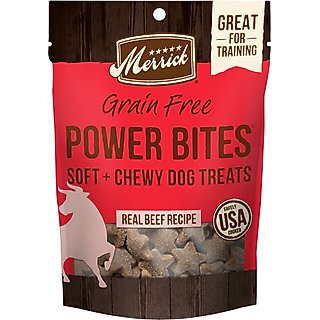
You and your dog are likely to work up an appetite during hiking, so bring lots of snacks for you (granola bar, jerky stick) and treats for your pup (like these soft, chewy bites made from real, deboned beef). Customers enjoy the smaller size of these treats that can be given to dogs of all sizes, and like how soft and easy to chew they are for dogs who need something easier to bite.
Best Dog Food Storage Container
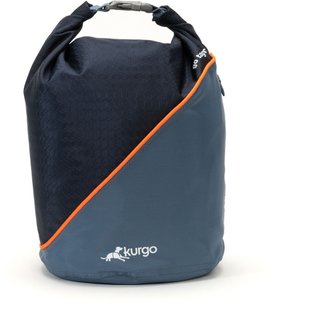
If you’re planning an overnight hiking or backpacking trip with your dog—or even for day hikes that overlap with feeding times, bringing this food storage bag along for the ride is a no-brainer. The foldable top collapses on itself for a tight seal and features a bottom pocket to stash a collapsible bowl. Pet parents say the foldable top ensures the bag can be condensed for smaller food storage and easy traveling. Plus, you can throw it in the wash so it’s ready for next time.
Best Dog Sunscreen

Dogs can get sunburned, especially on parts with no fur, thinner fur or light-colored fur. If you’ll be out in the sun (indirect or otherwise—UV rays can penetrate in both cases), try misting this spray dog sunscreen on your pup for protection from the harmful rays. It’s made with non-toxic ingredients with a non-greasy formula, so your dog’s coat won’t feel grimy or oily after applying. Customers say their dogs don’t mind the application, and they feel better knowing their skin is protected.
Best Hands-Free Dog Leash
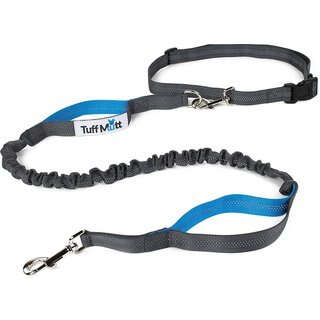
On hikes when you need your hands free to climb, balance or just feel uninhibited, this hands-free leash is a nice way to offer freedom for both you and your dog. Attach the bungee-style leash to the adjustable waist belt, and you’re good to go exploring. The leash offers two handles for longer or closer walking if needed too. Chewy customers say the leash is sturdy, and they love the double-handle feature for when they need more grip.
How We Chose These Products
Hiking with your dog is all about experiencing what nature has to offer together, and the right dog hiking gear can help get you on the trails faster and with more confidence. That’s why we consulted our experts, who spend tons of time with their own pets outdoors, to understand what types of products are needed for hiking with dogs. Then, we combed through Chewy’s best-selling products to bring you only those that have a minimum rating of 4 stars from customers. This way, you can be sure you’re getting dog hiking gear that is pet-tested and pet parent–approved.
What Do I Need To Go Hiking With a Dog?
Now that you know what the best gear is for your next hiking trip with your dog, let’s walk through the different types of dog gear in more detail to better understand how they can improve safety and comfort, and simply make the experience more enriching and enjoyable for you both.
Dog Harness
Always ensure your dog has a well-fitted harness that doesn’t inhibit their natural gait or range of motion, says Schultz. Be mindful of harnesses with a horizontal strap in front that could inhibit a dog’s shoulder extension, which could prove tricky while maneuvering across terrain on hikes, she adds. A harness with a handle on the back is a nice option if you think you may need to hoist your dog over or up something on the trail, as well.
Portable Water Bowl or Bottle
Hydration for you and your dog throughout your hike is essential, so products that provide easy access to drinking water are a must. “A general rule of thumb for dogs—without strenuous activity in mind—is to drink approximately 1 oz. of water per pound of body weight per day,” says Maggie Peikon, manager of communications at American Hiking Society, who hikes weekly with her dog, Finley, a 10-year-old Standard Schnauzer. “With hiking in mind, you’ll want to be sure you have more than enough water to accommodate your dog’s needs during a physically demanding outing.” A collapsible dog bowl is a great space-saving solution, and water bottles with good leak protection or those with a spout for easy drinking are smart choices as well.
Leash
Whether you opt for a longer lead to give your dog a little sense of freedom or the trail rules or environment necessitate a short leash, choosing a style that is well-made and sturdy is important when hiking with your dog. “A leash with a strong clip is always a good idea,” says Peikon. “You never know what you may encounter on the trail, and ensuring your dog’s safety is essential.” For hikes and other outdoor activities, some pet parents opt for a hands-free leash that wraps around their waist or chest to keep their own hands free, but if your dog tends to pull on a leash this may not be the best choice, she says.
Food and Snacks
Water. Check. Food. Check. For longer hikes or if you know your dog may need a little savory encouragement, packing a small baggie with kibble or some treat isn’t a bad idea. You know how the hunger pangs thwart even the best-laid plans, so don’t get caught out midway through a hike with a grumbling stomach—and that goes for either of you. A small reusable baggie or a travel dog food container should do the trick.
Poop Bags
“Always remember to leave no trace,” says Peikon, referring to the initiative to keep nature in its, well, natural state. That includes granola bar wrappers from you and poop and waste-filled bags from your pup. In addition to making sure you have plenty of poop bags, consider adding something to your pack to carry the used waste bags out of the park, says Peikon.
“Not all trails will have garbage bins, so having a way to carry out your dog’s waste, such as a carabiner clip or this pouch bag from KONG, is essential—leaving it on the side of the trail is not an option,” she says. (You never want to leave waste on the ground, as that could spread bacteria or disease; not to mention, it’s unpleasant for fellow hikers.)
Other Dog Hiking Gear To Consider
These are a few other nice-to-have items to consider adding to your cart before checkout:
- Dog bug spray: A mosquito repellent may come in handy in dense, or humid, environments. This one from Vet’s Best comes highly rated by Chewy customers.
- GPS tracker: If you’re interested in keeping an eye on your dog’s movement for fitness purposes or mileage on the trail, a GPS activity tracker could be a handy tool. Just don’t rely on these gadgets instead of recall cues when you need your dog to return to you, as they need cellphone service to work—a limited commodity while hiking, says Schultz.
- Tent: A tent is a must if you’re planning to hike to a campsite for an overnight in the backcountry. Bring a foldable dog mat or thin dog bed for your dog to sleep on alongside your sleeping bag inside the tent with you, says Schultz. This travel dog bed from Frisco by Chewy is a good option.
- Light-up collar: In low-lit areas, during dusk or at night, an easy-on, easy-off light-up collar is a great way to keep your pup in sight. This rechargeable LED collar from Blazin is one option to try.
Benefits of Hiking With Your Dog
In addition to the obvious physical benefits, hiking with your dog also has mental health benefits.
“When we travel [or] go someplace new, we feel refreshed and invigorated when we get back,” says Schultz. The same is true for our dogs. “For a dog, who typically only gets to walk around their neighborhood and smell the same mailboxes every day, it just changes things up for them,” she says.
Plus, it’s a chance to strengthen your relationship, says Peikon. “Hiking provides social benefits, both for you and your pet, to bond through quality time together and for your pet to experience social interactions with other hikers and hiking dogs,” she says.
Tips for Hiking With Dogs
- Start small. “The best way to start hiking with your dog is simply to head out and go,” says Peikon. But you want to “start small, start local and see how the experience goes.” The life stage of your dog can impact the distance, terrain and elevation they can safely hike, as well, says Schultz. Puppies and seniors shouldn’t be on strenuous or lengthy trails.
- Double-check that a trail is dog-friendly. Ask local guides and browse forums for images and insider info, says Schultz. A trail may be labeled dog-friendly because it allows dogs, but that doesn’t necessarily mean the terrain is suitable for dogs (think: extreme inclines, steep drop-offs or very rocky trails). While you’re researching, “ensure that you know the leash laws in the area, and adhere to them,” adds Peikon. “This is for your safety, your dog’s safety, the safety of other hikers and their pets, as well as the environment you’re hiking and the wildlife that call it home.”
- Always be prepared. Have a plan for the unexpected, such as if your dog is injured. Pack a portable first aid kit, and “always have a plan for how to carry your dog off a trail during a hike,” says Schultz. She recommends having (and practicing with) a dog rescue harness on hand, which has a sling-like design to hold a dog’s weight with straps to carry the dog like a backpack. You may also want to pack some extra kibble for them and a snack for you to maintain energy as the miles increase. Plus, “you have to think about the weather where you’re hiking,” says Schultz. “Is your dog going to need a jacket or a coat? I’m also a big fan of cooling jackets or a bandana [for hot days].”
Have more hiking questions? Check out this ultimate guide to hiking with dogs, which covers everything from finding a dog-friendly trail to safety tips to trail etiquette.
Ready to hit the trails with your pup? Feel prepped and ready for anything with our “best of” list for all your dog hiking gear needs, so you both have a safe and enjoyable time in the Great Outdoors. Looking for your next adventure? Check off some epic destinations from these best dog-friendly hikes in all 50 states.
Hiking With Dogs FAQs
Is it OK to take a dog hiking?
Yes, but there are some caveats. Before heading out, make sure your dog is physically capable and up for a hike (get a vet’s opinion if you have questions), and build up their cardiovascular stamina before venturing out for a lengthy trail, says Schultz. And don’t forget about practical factors like checking for inclement weather, dog-friendliness of a trail, and even local hunting or wildlife seasons, she adds. Everything look good? Happy trailing!
How many miles can you hike with a dog?
There’s no hard-and-fast rule for how many miles your dog can safely hike. It really comes down to the physical conditioning of your dog, says Schultz. How conditioned (think: endurance, strength, orthopedic health, their paw pads, etc.) a dog is will help determine the distance they can travel. But climate, terrain and elevation all make a difference, too, she says. And when in doubt, “less is always better until you build up their stamina,” she says.
Do dogs like going on hikes?
Not all dogs will enjoy hiking, and some may start out strong but have their limits. The key to knowing where your dog falls is being attuned to their stress signals, says Schultz. Typical signs include yawning, trembling, lip licking and not wanting to move. Your dog may stop, sit or even lie down on the trail if they don’t want to continue on, she says. The bottom line: If hiking isn’t your dog’s thing, never force them.
How to carry your dog on a hike?
If you’re interested in carrying your dog during a hike in a backpack, for example, you should make a few key considerations, says Schultz. Are you physically able to carry your dog? Larger breeds will certainly be more difficult to carry for longer periods, not to mention they will likely be quite uncomfortable, she says. “Dogs’ bodies are designed to be horizontal,” she says. “We’re asking them to be vertical in a backpack.” So, you’d want your dog to be able to comfortably sit in a carrier or backpack that has strong support and padding. If you have a smaller dog who can move around comfortably in a well-designed, joint-friendly backpack, you can test it out on shorter distances at first, and go from there, says Schultz. Otherwise, stick to what distance they can cover on foot or leave them at home.
Attributions
Expert input provided by Maria Christina Schultz, CCFT, owner of Maria Christina K9 Training based in central Virginia; and Maggie Peikon, manager of communications at American Hiking Society, based in Moab, Utah.
